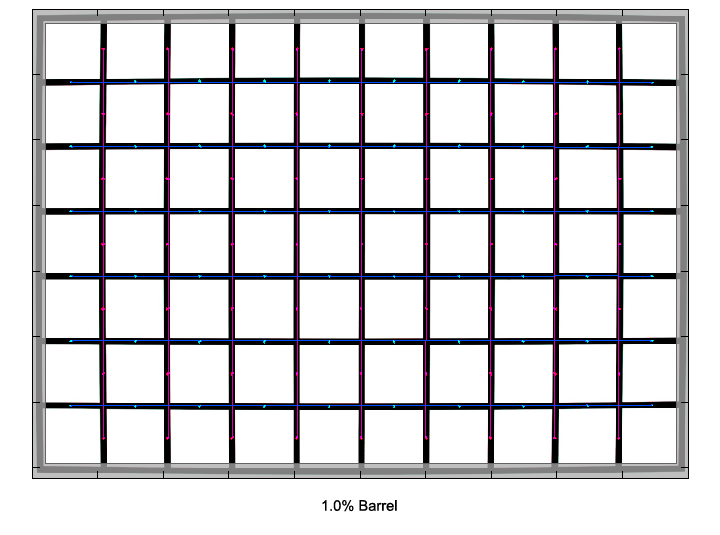|
Page 2 of 3

Distortion
At 70mm the lens shows moderate barrel distortion. For most of the upper zoom range there is visible pincushion distortion, reaching a peak value of 1.8% at the maximum focal length.
|
Move the mouse cursor over the focal length text marks below to observe the respective distortion
|
| 70mm |
135mm |
200mm |
|

|
The chart above has a real-world size of about 120x80cm.
Vignetting
At the largest aperture, vignetting is a little pronounced, especially at 200mm. However, as usual, stopping down reduces the amount of light fall-off considerably. From f/5.6 on, vignetting should no longer be an issue for most subjects.
We're performing our vignetting analysis based on
(uncorrected) JPEGs straight from the camera. The JPG engine of the Nikon D3x features a rather flat
gradation curve, thus has a moderate contrast characteristic, resulting in comparatively low vignetting figures - the
corresponding Canon figures are roughly 40% higher due to the more
aggressive default contrast setting.

MTF (resolution)
The lens performs on a very high level with excellent center resolution straight from the maximum aperture and very good borders and corners at all tested focal lengths.
Please note that the MTF results are not directly comparable across the different systems!
Below is a simplified summary of the formal findings. The chart shows line widths
per picture height (LW/PH) which can be taken as a measure for sharpness.
If you want to know more about the MTF50 figures you may check out the corresponding
Imatest Explanations

Chromatic Aberrations (CAs)
Chromatic aberrations (color shadows at harsh contrast transitions) are well under control, reaching peak values of just below 1.2 pixels at the image borders at 70mm when stopped down, but considerably lower values for the rest of the focal length and aperture range.
Please note that lateral CAs can easily be corrected in software or by the camera itself (most modern Nikon DSLRs remove CAs on-the-fly if you shoot JPGs).

Bokeh
The AF-S 70-200/4 VR is a moderately fast lens, but due to its close focus abilities combined with a long focal length it still allows you to separate the main subject from the background, so the rendering quality of out of focus areas is an important aspect.
The lens delivers a generally very smooth bokeh at all focal lengths, except for areas in front of the focal plane, where the image blur is a bit nervous.
Thanks to 9 rounded aperture blades, background highlights remain circular throughout the whole aperture and focal range, except at the image borders where they are cut off due to mechanical vignetting. They show a smooth filling with almost no outlining.

Bokeh Fringing
Bokeh fringing (non-coinciding focal planes of the various colors) is an issue often found on fast lenses. It's visible as halos of different colors in out-of-focus areas - usually magenta (red + blue) in front the focus point and green beyond.
With a maximum aperture of f/4 the Nikkor does not really qualify as "fast" glass, and consequently bokeh fringing is no real issue. There are minor traces of the mentioned colour casts in high contrast scenes, like the one below, but in most real-world subjects the fringing will be unnoticeable.
|
Move the mouse cursor over the f-stop marks below to observe the respective LoCAs
|
| f/4.0 |
f/5.6 |
f/8.0 |
f/11.0 |
|

|
Flare/Glare
The lens is quite complex with lots of surfaces that potentially reflect light. Still, it handles backlight very well and keeps a high level of contrast in these conditions, which is party due to Nikon's use of Nano Crystal Coat. Under certain conditions, however, the lens produces a fair amount of haze at the image borders opposite to the source of the backlight.

|